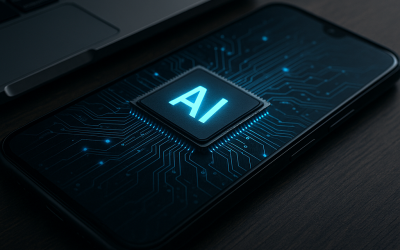Consulting’s Dirty Secret: AI Is Gutting the Career Ladder While Clients Still Pay for Human Brains
Consulting firms are quietly transforming from talent-driven organizations into AI-powered machines, all while billing clients as if armies of bright young minds are still burning the midnight oil. This article exposes how artificial intelligence is erasing traditional consulting career paths, why clients remain in the dark, and what this means for the future of both the industry and its workforce.
The Traditional Consulting Model: Apprenticeship Disguised as Expertise
For decades, consulting firms have relied on a predictable model: recruit ambitious graduates, work them hard on repetitive analysis, and gradually promote the survivors up the pyramid. This “up or out” system wasn’t just about billable hours—it was a massive human filter, producing a small cadre of partners who’d internalized the firm’s culture, methods, and client relationships. The lower rungs—analysts and associates—did the grunt work: data gathering, spreadsheet modeling, slide deck assembly, and background research. Their labor subsidized the learning curve and funded the firm’s profits.
Clients, meanwhile, bought the story that they were paying for access to the best brains in the business. The reality: much of what they paid for was junior labor, learning on the job, with senior oversight sprinkled on top. This model was stable because everyone—clients, partners, and recruits—understood the trade-offs. The promise: grind through the early years, and you might become a partner yourself.
AI’s Disruption: Automating the Bottom Rungs
Enter generative AI and advanced analytics. Suddenly, the tedious, repetitive tasks that once defined entry-level consulting are vanishing. Need a market landscape? AI scrapes, summarizes, and visualizes in minutes. Need a financial model? AI builds it, checks it, and iterates faster than any analyst. Need a PowerPoint deck? AI assembles slides, suggests storylines, and even mimics the firm’s preferred formatting.
The impact is seismic:
- Fewer Entry-Level Roles: Firms need fewer analysts and associates because AI handles the volume and speed of basic work.
- Compressed Learning Curve: Junior consultants lose the opportunity to learn by doing. The apprenticeship model breaks down, as there’s less “real” work left for humans to cut their teeth on.
- Invisible Automation: Most clients don’t know (or care) how the sausage is made, as long as deliverables arrive on time. Firms quietly swap human labor for AI, pocketing the margin.
The dirty secret: the billable hour remains, but the billable human is quietly being replaced.
Who Wins, Who Loses: The New Consulting Power Dynamics
The winners in this new regime are clear. Partners and senior consultants who control client relationships become even more valuable—they’re the “rainmakers” who can sell, interpret, and package AI-powered insights. Firms themselves boost margins by reducing headcount while maintaining high fees. Early adopters of AI gain a competitive edge, delivering faster results at lower cost (internally, if not to the client).
The losers? Entry-level talent and the traditional career ladder. With fewer junior roles and less meaningful work to do, new hires struggle to develop the judgment and context that once came from years of hands-on analysis. The apprenticeship pipeline dries up. Mid-level consultants find themselves squeezed—too junior to own client relationships, too senior for AI to fully replace, but increasingly redundant as the “middle” is automated away.
Clients, for now, are neutral—oblivious to the shift, as long as the quality and speed of work remain high. But this ignorance is temporary. As AI commoditizes more of the consulting process, clients will eventually question why they’re paying premium rates for what is, in effect, software output with a human veneer.
The Illusion of Human Value: Why Clients Still Pay
Why haven’t clients revolted? Three reasons:
- Brand Trust: The consulting firm’s brand still carries weight. Clients assume they’re buying judgment, experience, and discretion—not just raw analysis.
- Opaque Processes: Consulting deliverables are black boxes; clients rarely see how the work is done. Whether it’s a team of analysts or an AI engine, the output looks the same.
- Risk Aversion: Hiring a top-tier consulting firm is still an insurance policy for executives—if the advice fails, blame the experts, not yourself.
This status quo is fragile. As AI-generated work becomes ubiquitous and clients get savvier, the value proposition of the traditional consulting model will erode. Already, some forward-thinking clients are demanding transparency: “Show me how much of this was done by humans versus AI. Adjust your fees accordingly.”
Long-Term Consequences: What Happens When the Ladder Collapses?
The collapse of the traditional career ladder has systemic consequences:
- Talent Drain: Ambitious graduates may bypass consulting altogether, seeing fewer opportunities for advancement and skill-building.
- Skill Gaps: Without years of hands-on apprenticeship, the next generation of consultants may lack the nuanced judgment and client management skills that partners once developed organically.
- Culture Shift: Firms risk becoming hollowed-out shells: a handful of senior rainmakers, a thin layer of client-facing consultants, and a black box of AI doing the heavy lifting.
- Pricing Pressure: As clients wise up, expect a race to the bottom on fees for anything AI can automate, with only bespoke, high-trust advisory work commanding premium prices.
There’s also a broader risk: as consulting firms become less effective at developing future leaders, the industries they serve lose a critical pipeline of talent. Many Fortune 500 executives are ex-consultants. What happens when that pipeline dries up?
What Strategic Leaders Should Do Now
For consulting firm leaders, denial is not a strategy. The smart play is to:
- Radically Rethink the Talent Model: Invest in new forms of apprenticeship—rotations, client immersion, AI-human teaming—so junior staff still build judgment, not just prompt engineering skills.
- Be Transparent with Clients: Own the AI transition. Offer new pricing models that reflect the real mix of human and machine labor. Use transparency as a trust-builder, not a liability.
- Double Down on Relationship Skills: The irreplaceable value is in trust, influence, and bespoke problem-solving. Train consultants to be advisors, not just analysts.
- Innovate the Business Model: Explore subscription, outcome-based, or productized offerings that align incentives with client results, not just hours billed.
For clients, the imperative is clear: demand transparency, question the value you’re getting, and look for partners who can deliver both AI-powered efficiency and genuine human insight.
Conclusion
The consulting industry’s dirty secret is out: AI is gutting the traditional career ladder, even as clients keep paying for the illusion of human-driven insight. The winners will be those who adapt—redefining talent, embracing transparency, and focusing on the human skills AI can’t replicate. The losers will cling to a broken model, hoping clients never notice the switch. The future of consulting belongs to those who own the change, not those who hide from it.



0 Comments